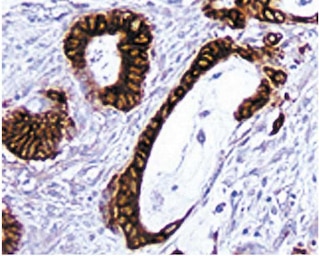-
Training
- Flow Cytometry Basic Training
-
Product-Based Training
- BD FACSDiscover™ S8 Cell Sorter Product Training
- Accuri C6 Plus Product-Based Training
- FACSAria Product Based Training
- FACSCanto Product-Based Training
- FACSLyric Product-Based Training
- FACSMelody Product-Based Training
- FACSymphony Product-Based Training
- HTS Product-Based Training
- LSRFortessa Product-Based Training
- Advanced Training
-
- BD FACSDiscover™ S8 Cell Sorter Product Training
- Accuri C6 Plus Product-Based Training
- FACSAria Product Based Training
- FACSCanto Product-Based Training
- FACSLyric Product-Based Training
- FACSMelody Product-Based Training
- FACSymphony Product-Based Training
- HTS Product-Based Training
- LSRFortessa Product-Based Training
- United States (English)
-
Change country/language
Old Browser
This page has been recently translated and is available in French now.
Looks like you're visiting us from {countryName}.
Would you like to stay on the current country site or be switched to your country?




Immunohistochemical staining of CD29 positive cells. Frozen sections of normal mouse spleen were stained with Purified Hamster Anti-Mouse CD29 (Cat. No. 550530) antibody. Endothelial cells of the central arteriole and splenic sinuses can be identified by the brown labeling of their cell membranes. Amplification 20X.


BD Pharmingen™ Purified Hamster Anti-Mouse CD29

Regulatory Status Legend
Any use of products other than the permitted use without the express written authorization of Becton, Dickinson and Company is strictly prohibited.
Preparation And Storage
Recommended Assay Procedures
Immunohistochemistry: The HM β1-1 antibody specific for mouse CD29 is recommended to test for immunohistochemical staining of acetone-fixed frozen sections. Tissues tested were mouse spleen and thymus. The antibody stains lymphocytes and endothelial cells. The isotype control recommended for use with this antibody is purified hamster IgG (550345). For optimal indirect immunohistochemical staining, the HM β1-1 antibody should be titrated (1-10 to 1-50 dilution) and visualized via a three-step staining procedure in combination with anti-hamster IgG cocktail (Cat. No. 550335) as the secondary antibody and Streptavidin-HRP (Cat. No. 550946) together with the DAB detection system (Cat. No.550880). The clone HM β1-1 is not recommended for formalin-fixed paraffin embedded sections. Clone HMβ1 also works on rat acetone fixed frozen sections (tested during development).
Product Notices
- Since applications vary, each investigator should titrate the reagent to obtain optimal results.
- Although hamster immunoglobulin isotypes have not been well defined, BD Biosciences Pharmingen has grouped Armenian and Syrian hamster IgG monoclonal antibodies according to their reactivity with a panel of mouse anti-hamster IgG mAbs. A table of the hamster IgG groups, Reactivity of Mouse Anti-Hamster Ig mAbs, may be viewed at http://www.bdbiosciences.com/documents/hamster_chart_11x17.pdf.
- Caution: Sodium azide yields highly toxic hydrazoic acid under acidic conditions. Dilute azide compounds in running water before discarding to avoid accumulation of potentially explosive deposits in plumbing.
- Sodium azide is a reversible inhibitor of oxidative metabolism; therefore, antibody preparations containing this preservative agent must not be used in cell cultures nor injected into animals. Sodium azide may be removed by washing stained cells or plate-bound antibody or dialyzing soluble antibody in sodium azide-free buffer. Since endotoxin may also affect the results of functional studies, we recommend the NA/LE (No Azide/Low Endotoxin) antibody format, if available, for in vitro and in vivo use.
- Source of all serum proteins is from USDA inspected abattoirs located in the United States.
- This antibody has been developed for the immunohistochemistry application. However, a routine immunohistochemistry test is not performed on every lot. Researchers are encouraged to titrate the reagent for optimal performance.
- An isotype control should be used at the same concentration as the antibody of interest.
- Please refer to www.bdbiosciences.com/us/s/resources for technical protocols.
Companion Products




The HM β1-1 monoclonal antibody specifically binds to the 130-kDa integrin β1 chain (CD29). CD29 is expressed on the cell surface as a heterodimer with one of the distinct integrin-α chains. With α1 through α6 (CD49a through CD49f), it forms the VLA-1 through VLA-6 complexes, respectively, and with αv (CD51), it forms αvβ1 integrin. It also associates with the integrin α7 α8, and α9 chains in non-lymphoid tissues. As a result, CD29 has a broad tissue distribution, including lymphocytes, endothelia, smooth muscle, epithelia, and oocytes. This hamster mAb to a mouse leukocyte antigen has been observed to crossreact with similar populations of rat leukocytes. Source of the immunogen was purified mouse VLA-4 (α4β1, CD49d/CD29).
Development References (3)
-
Jackson Laboratory. Mouse Genome Database. Available: http://www.informatics.jax.org/ 1998, Sept. 17.
-
Noto K, Kato K, Okumura K, Yagita H. Identification and functional characterization of mouse CD29 with a mAb. Int Immunol. 1995; 7(5):835-842. (Immunogen). View Reference
-
Springer TA. Adhesion receptors of the immune system. Nature. 1990; 346(6283):425-434. (Biology). View Reference
Please refer to Support Documents for Quality Certificates
Global - Refer to manufacturer's instructions for use and related User Manuals and Technical data sheets before using this products as described
Comparisons, where applicable, are made against older BD Technology, manual methods or are general performance claims. Comparisons are not made against non-BD technologies, unless otherwise noted.
For Research Use Only. Not for use in diagnostic or therapeutic procedures.
Report a Site Issue
This form is intended to help us improve our website experience. For other support, please visit our Contact Us page.